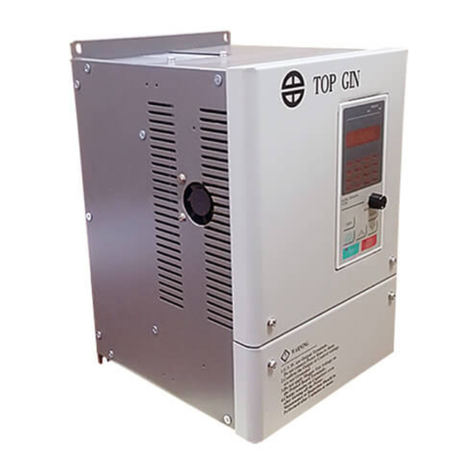
- 3 -
WARNINGS FOR UL/cUL MARKING
•Do not connect or disconnect wiring, or perform signal checks while the power
supply is turned ON.
• The Inverter internal capacitor is still charged even after the power supply is
turnd OFF. To prevent electric shock, disconnect all power before servicing the
Inverter. Then wait at least one minute after the power supply is disconnected
and all indecators are OFF.
• Do not perform a withstand voltage test on any part of the Inverter. This
electronic equipment uses semiconductors and is vulnerable to high voltage.
• Do not remove the Digital Operator or the blank cover unless the power supply
is turned OFF. Never touch the printed control board (PCB) while the power
supply is turned ON.
• This Inverter is not suitable for use on a circuit capable of delivering more than
18,000 RMS symmetrical amperes, 250volts maximum (220V class units) or
18,000 RMS symmetrical amperes, 480volts maximum (440Vclass units).
WARNINGS FOR CE MARKINGS
• Only basic insulation to meet the requirements of protection class 1 and
overvoltage category II is provided with control circuit terminals. Additional
insulation may be necessary in the end product to conform to CE requirements.
• For 440 V class Inverters, make sure to ground the supply neutral to conform to
CE requirements.
• For conformance to EMC directives, refer to the relevant manuals for the
requirements.























